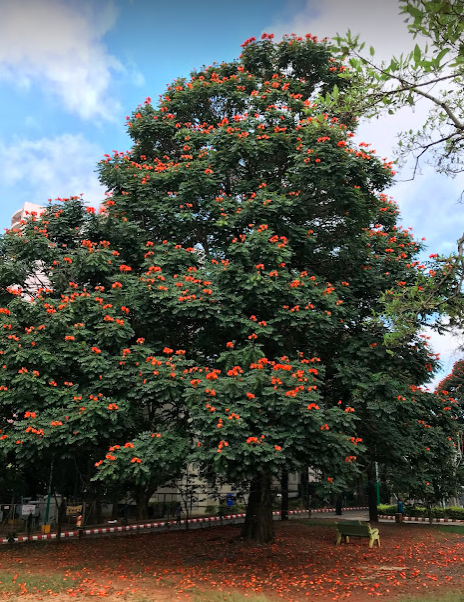Tall, leafy, plush trees are ubiquitous in Bangalore city. These canopies are given shades and cover throughout the year. Old Bangaloreans are constantly complaining about losing green cover due to infrastructure expansion activities and lakes to the real estate boom. The city is continuously expanding to accommodate the flux of human migration. Job seekers both formal and informal businesses are making Bangalore their new home. I am living in the southern fringes of the city and I love this part because of the green cover, few lakes, migratory bird’s hotspots etc. It is better than the other parts of the city which are developed in the last few years, unplanned and lacking greens. Bangaloreans love their parks and garden. We have several in every neighborhood. There was a time when we were visiting different parks every weekend. Later, I moved to mini forest and nearby Puttenhalli lake for a walk and jog. In the last 2 years, Pandemic restricted our movements therefore our gated community campus is the only place remaining for morning and evening walks. On the brighter side of the pandemic, Now I started to notice nature in detail, stars and moon gazing at the night sky. Bangalore sky was never this clear in past or never get time to look up and admire different constellations. I have been observing trees around me and their flowering/blooming patterns. I am quite amazed to see things in detail that we ignore and take for granted.
Did you notice that Bangalore has a perpetual spring? Bangalores cool climes are famous among city dwellers. Do we know what attributed to Bangalore’s green cover? History of various Parks such as Lalbagh and Cubbon park and many more.
Japan is famous for hanami matsuri (Cherry Blossom festivals). It is truly beautiful. But in Bangalore, we have our Cherry Blossoms in March / April – pink tabebuias and purple jacarandas. May will cover the skylines with Mayflowers/Gulmohar. Autumn months with yellow color golden cassia and African Tulip flowers in fall. December winter, you will notice fragrant white Millingtonia and tall cork tree flowers.
Bangalore does not have a long history. It was mainly a marshy land with thousands of ponds/lakes in the 16th century. Later it was developed by Hyder and Tipu. After Lord Cornwallis conquered Mysore during the Anglo Mysore wars, Bangalore became a cantonment for the East India Company and later by the British Raj. It was used during the Carnatic war with the French and to support Madras’ presidency. Mysore state took control of Bangalore and developed the city in the late 19th century.
Gustav Hermann Krumbiegel – a German was responsible for Bangalore city planning, its gardens, and several buildings, commissioned by Mysore maharaja Nalwadi Krishnaraja Wadiyar. Krumbiegel received patronage and support from the Mysore maharaja to create a sustainable ecosystem in Bangalore. Mr. Krumbiegel introduced plants and trees from different continents. Bangalore trees are not native to this land rather we have trees from Australia, Europe, Africa, and South America adapted to tropical conditions. He has created sequential blooming patterns so that Bangalore can enjoy the spring season throughout the year. Ironically, due to his German origin during the British Raj period, His name was omitted from the credit list. This happened during the Great War. He was ill-treated and he remained without a job during the war. He was reinstated by Mysore maharaja later. Among his several creations, Vrindavan Garden of Mysore will remain his best contributions. Next time you look up and see various colors of nature here in Bangalore, do remember that one unknown German who made this place his home is responsible for the bloom.





